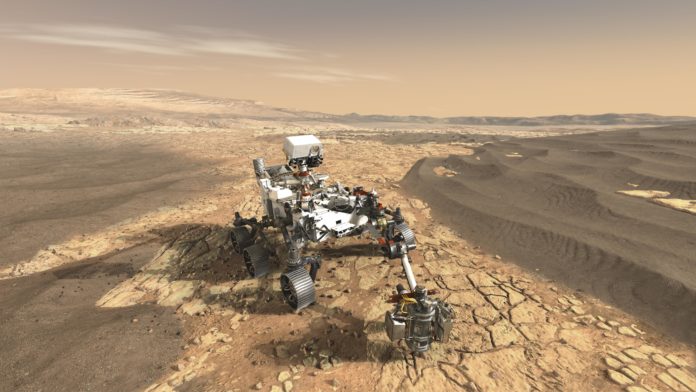By: Nick Gambino
On Thursday, the NASA rover Perseverance touched down on Mars, bringing the count of NASA rovers on the Red Planet to two.
The successful 203-day journey, where the high-tech robot crossed a jaw-dropping 292 million miles, helped it rack up some new records along the way. Perseverance is the largest rover ever sent by NASA to another planet. It’s just over 2,200 pounds and is about the size of a car. In contrast, Curiosity, which has been there for over 8 years, is just under 2,000 pounds.
“This landing is one of those pivotal moments for NASA, the United States and space exploration globally – when we know we are on the cusp of discovery and sharpening our pencils, so to speak, to rewrite the textbooks,” Steve Jurczyk, NASA’s acting Administrator said of the historical mission. “The Mars 2020 Perseverance mission embodies our nation’s spirit of persevering even in the most challenging of situations, inspiring and advancing science and exploration. The mission itself personifies the human ideal of persevering toward the future and will help us prepare for human exploration of the Red Planet.”
Perseverance captured images almost immediately upon landing which NASA received a few minutes later. The images were from the rover’s POV of the rocky Martian landscape sprawled out in front of it as it readies to traverse the surface.
The goals of Perseverance are exciting, especially to us laymen who know little of science. The Mars rover has been tasked with identifying past environments capable of supporting microbial life and seeking signs of microbial life in those environments.
Other objectives that continue along that line include collecting rock and soil samples and storing them on the planet and preparing for humans by testing oxygen production from the atmosphere.
Curiosity will continue its own mission which has resulted in some astounding discoveries, including evidence of liquid water that had once flowed on Mars as well as ancient organic material.
In the coming days, NASA hopes to see numerous photos and even audio and video footage of Mars. This should be pretty spectacular and just the kind of media we need back here on Earth to keep us excited about space and interplanetary exploration.







